Current Electricity
- Resistances n, each of r ohm, when connected in parallel give an equivalent resistance of R ohm. If these resistances were connected in series, the combination would have a resistance in ohms, equal to
-
View Hint View Answer Discuss in Forum
R = r ⇒ r = nR n
When connected in series, Req = nr = n (nR) = n²R
Correct Option: B
R = r ⇒ r = nR n
When connected in series, Req = nr = n (nR) = n²R
- When a wire of uniform cross–section a, length l and resistance R is bent into a complete circle, resistance between any two of diametrically opposite points will be
-
View Hint View Answer Discuss in Forum
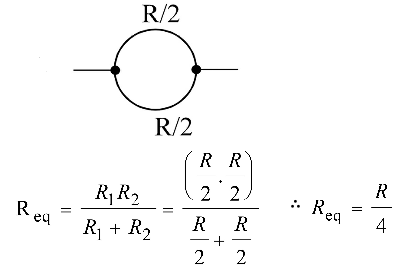
Correct Option: A

- A wire of resistance 12 ohms per meter is bent to form a complete circle of radius 10 cm. The resistance between its two diametrically opposite points, A and B as shown in the figure, is

-
View Hint View Answer Discuss in Forum
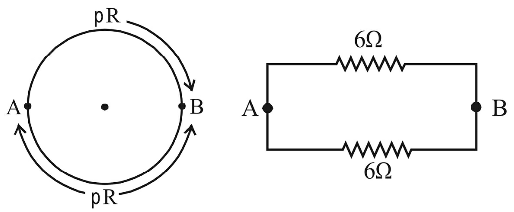
The resistance of length 2πR is 12Ω. Hence the resistance of length πR is 6Ω. Thus two resistances of 6Ω can be represented as shown in fig. 2.∴Equivalent resistance R = 6 × 6 = 3 Ω 12
Correct Option: A

The resistance of length 2πR is 12Ω. Hence the resistance of length πR is 6Ω. Thus two resistances of 6Ω can be represented as shown in fig. 2.∴Equivalent resistance R = 6 × 6 = 3 Ω 12
- A ring is made of a wire having a resistance R0 = 12 Ω. Find the points A and B as shown in the figure, at which a current carrying conductor should be connected so that the resistance R of the sub-circuit between these points is equal to 8/3 Ω .
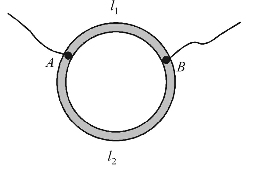
-
View Hint View Answer Discuss in Forum
Let x is the resistance per unit length then
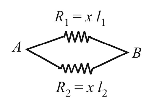
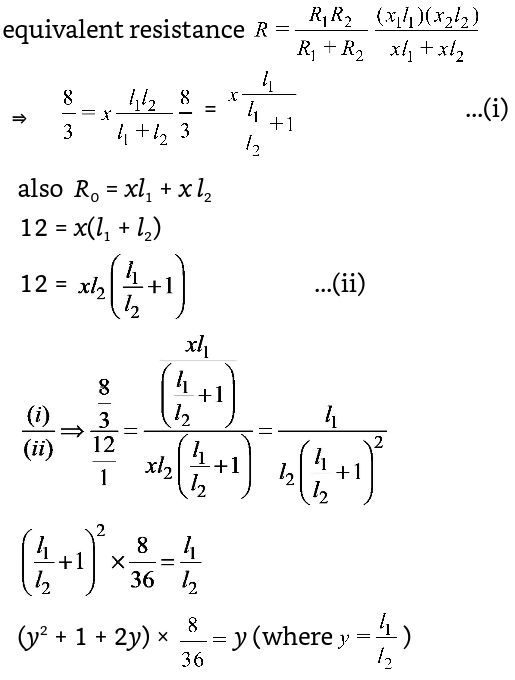
8y² + 8 + 16y = 36y
⇒8y² – 20y + 8 = 0
⇒2y² – 5y + 2 = 0
⇒2y² – 4y – y + 2 = 0
⇒2y (y – 2) – 1(y – 2) = 0
⇒(2y – 1) (y – 2) = 0⇒ y = l1 = 1 or 2 l2 2
Correct Option: D
Let x is the resistance per unit length then


8y² + 8 + 16y = 36y
⇒8y² – 20y + 8 = 0
⇒2y² – 5y + 2 = 0
⇒2y² – 4y – y + 2 = 0
⇒2y (y – 2) – 1(y – 2) = 0
⇒(2y – 1) (y – 2) = 0⇒ y = l1 = 1 or 2 l2 2
- A 12 cm wire is given a shape of a right angled triangle ABC having sides 3 cm, 4 cm and 5 cm as shown in the figure. The resistance between two ends (AB, BC, CA) of the respective sides are measured one by one by a multi-meter. The resistances will be in the ratio of
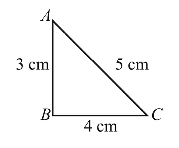
-
View Hint View Answer Discuss in Forum
Resistance is directly proportional to length
1 = 1 = 1 = (4 + 5) + 3 RAB 3 4 + 5 (3)(4 + 5) RAB = 3 × (4 + 5) = 27 3 + (4 + 5) 12
Similarly,RBC = 4 × (3 + 5) = 32 4 + (3 + 5) 12 RAC = 5 × (3 + 4) = 35 5 + (3 + 4) 12
∴ RAB : RBC : RAC = 27 : 32 : 35
Correct Option: C
Resistance is directly proportional to length
1 = 1 = 1 = (4 + 5) + 3 RAB 3 4 + 5 (3)(4 + 5) RAB = 3 × (4 + 5) = 27 3 + (4 + 5) 12
Similarly,RBC = 4 × (3 + 5) = 32 4 + (3 + 5) 12 RAC = 5 × (3 + 4) = 35 5 + (3 + 4) 12
∴ RAB : RBC : RAC = 27 : 32 : 35

